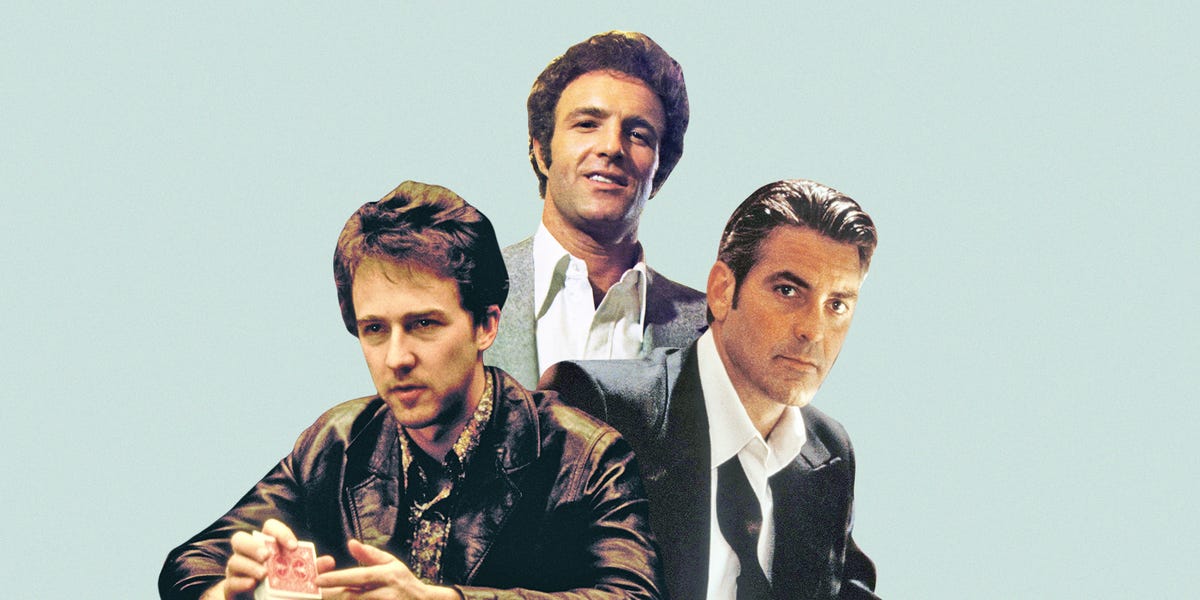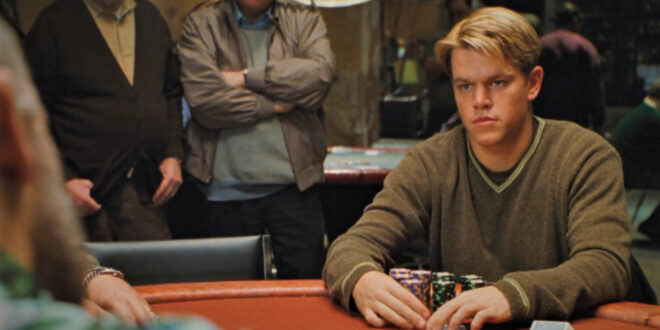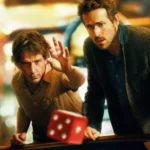From the earliest days of Hollywood to today’s glitzy casinos, gambling has been an integral part of the silver screen. From classic films such as The Sting and Casino Royale to modern cult favorites like Oceans Eleven, gambling themes have always played a major role in cinema.
But what is it about these stories that so captivates audiences? This article will explore how gaming has shaped the silver screen over time, from its depiction in film noir classics to its influence on contemporary blockbusters. Well also examine why Hollywood loves a good gamble and look at some of the most iconic gambles seen in movies throughout history.
Join us as we delve into Hollywood’s own high-stakes game: gambling on the big screen!
From Social Commentary to Action-Packed Thrillers: Hollywoods Representation of the Casino Scene

From Social Commentary to Action-Packed Thrillers: Hollywood’s Representation of the Casino Scene has been an ever-changing journey over the years. From early silent films depicting casinos as seedy underbellies filled with crime, to modern blockbusters that use them as settings for high-thrill adventures; gambling has always had a place in moviemaking.
In classics such as The Godfather and Casino Royale, viewers are presented with a different perspective of casino life—where stakes can be high but so is the drama. On the other hand, films like Ocean’s Eleven have brought us into slick and sophisticated establishments with plenty of action and suspense.
As technology continues to evolve, so do cinematic depictions of casinos in movies, offering audiences diverse tales that come packed full of entertainment.
How Gambling Became an Iconic Feature of Cinema

From the early days of Hollywood to modern-day blockbusters, gambling has been a ubiquitous feature in films. From iconic scenes such as “The Sting” and “Casino Royale” to comedic gambles like Dumb and Dumber, playing cards, poker chips, dice, slot machines, and roulette wheels have all graced our movie screens over the years. But how did this activity become so closely associated with cinema? In its most basic form, gambling is an exciting way for characters to face off against each other while at the same time providing viewers with intense drama.
The high stakes involved add a thrilling element that can make or break relationships between characters onscreen. Whether it’s used as a tool for revenge or simply employed as entertainment for bored gamblers looking to pass the time in Las Vegas casinos, betting has always had a strong presence within film narratives.
Gambling also allows filmmakers to explore themes of chance and risk-taking more deeply than other genres might allow; luck stories are often engaging because they reflect real-life experiences where no one knows what lies ahead—all we can do is take our chances and hope for the best! In addition, gambling is seen by some directors as an opportunity to showcase flashy visuals that create stunning cinematic moments: from neon lights reflecting off poker chips during tense card games in smoky bars downtown; spinning roulette wheels accompanied by crescendoing music; or slot machines ringing out their distinct melodies when someone wins big money! All these elements create lasting images audiences remember long after leaving theaters. Ultimately, whether used symbolically or literally within narrative arcs throughout film history—gambling will remain an iconic feature of cinema due to its ability to capture the audience’s attention through suspenseful action sequences and powerful visual aesthetics alike.
Exploring the Influence of Casinos on Cinematic Imagery and Plot

From one of the earliest films, The Great Train Robbery (1903), to modern-day blockbusters such as Oceans Eleven (2001), cinema has had a long and storied relationship with gambling. Casinos have provided the perfect backdrop for filmmakers to explore themes of luck, risk-taking, and change in all sorts of genres.
Whether it is an action movie that centers around a daring heist or a romantic comedy set in Las Vegas, casinos have become synonymous with film storytelling. This essay will examine how casino settings have been used throughout cinematic history to influence both imagery and plotlines.
We will also look at how these elements help to create engaging stories on the silver screen. From classic westerns like My Darling Clementine (1946) which featured scenes from Tombstone’s Bird Cage Theatre saloon games room, to more contemporary pieces like Casino Royale (2006) where Daniel Craig plays high-stakes poker against his enemies – gambling has always been an integral part of cinema culture.
The lure of casinos can be seen as providing an exciting way into thrilling stories full of twists and turns; they give characters something risky yet potentially rewarding to strive for amidst their adventures in crime or romance. In addition to this tension between reward and risk however there also lies within them a sense of glamour – from James Bond’s visit’s Monte Carlo in Goldeneye (1995) through Jeff Bridges trip inside the House in Fear & Loathing In Las Vegas (1998).
This aesthetic appeal serves not only as eye candy but further entices audiences into the world created by filmmakers – often playing off real-life locations rather than sets built especially for movies – thus adding greater verisimilitude onto already captivating plots. Casinos are therefore much more than simply places where people gamble; they contain within them symbolism that speaks directly to us about our own lives – offering tales filled with suspenseful moments that never fail to draw viewers back time after time again no matter when or where they were filmed.
By exploring just some examples we can get a glimpse at how richly cinematic imagery rooted in casinos has added even greater depth to storylines over its many years on screen
Conclusion
From Hollywood to the Casino, gambling has had a major influence on the silver screen. From classic movies such as The Sting and Oceans Eleven to more modern takes like 21 and Rounders, viewers have been captivated by stories of card sharks, high-stakes poker games, heists, and other tales of luck.
The evolution of casinos over time has also provided a unique backdrop for many films. Casino-themed films often provide an exciting insight into this world – from its highs to its lows with all the risks that come along with it! Robby Riches Casino is one example of where people can experience some truly thrilling gaming experiences online safely and securely. Gambling has undoubtedly left its mark on cinema history; whether it’s in the form of a high-stakes game or simply being used as a device for creating tension or suspense in characters’ lives, it continues to shape cinematic storytelling today.
 Howl Movie
Howl Movie




